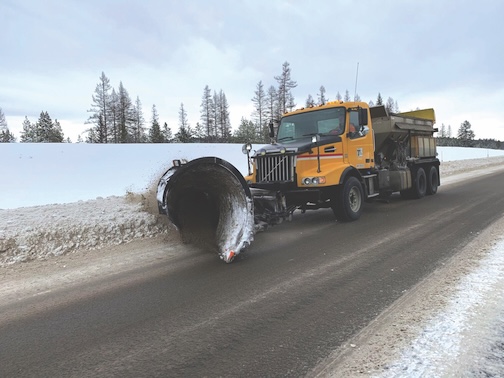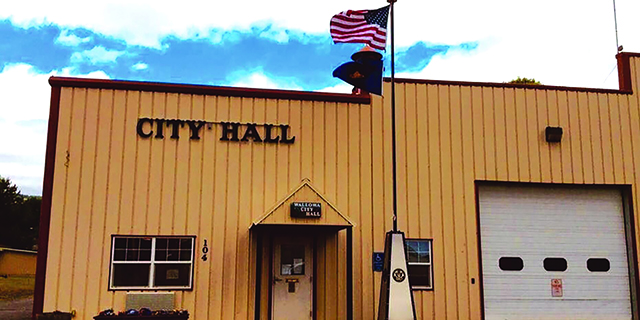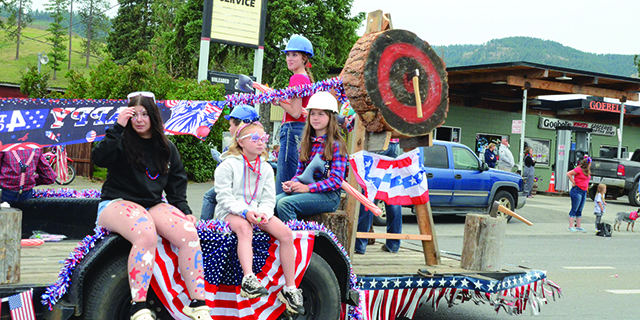Bob Zybach: Deadly national forest fires now entering towns
Published 7:00 am Monday, November 25, 2024

- A lightning-sparked wildfire burns July 22, 2024, near Durkee in Baker County.
In 1905 President Theodore Roosevelt created the U.S. Forest Service by transferring 56 million acres in 60 forest reserves from the U.S. Department of the Interior to the U.S. Department of Agriculture. His good friend and collaborator, Gifford Pinchot, was put in charge of the new agency as its first chief.
Pinchot’s famous slogan regarding the mission of the Forest Service was “to provide the greatest amount of good for the greatest amount of people in the long run.” By 1910 he had been able to expand the agency to 150 national forests covering 172 million acres.
Trending
The year 1910 was also the year that the mission, focus, and budget of the Forest Service were dramatically changed. An estimated 1,700 to 3,000 spot fires were driven together with unexpected hurricane-force winds for six hours on Aug. 20. The massive wind-driven flames burned and uprooted 3 million acres of forestland, destroyed several railroad towns from Montana, through Idaho, and into Washington, and killed 86 people — mostly firefighters under the direction of the Forest Service.
The 1910 fires galvanized the new agency into action and its mission became “fire prevention” above all else. Increased funding, research, and a great expansion in uniformed personnel soon took place.
In 1915 the first fire lookout tower was built on Mount Hood, and by the 1930s, nearly 8,000 lookouts were in operation, connected by a national network of telephones, roads, and pack trails. The 1935 policy of “put out every fire before 10 a.m. the following day” became even more effective with the advent of airplanes and smokejumpers during World War II.
The Forest Service became the trusted stewards of the nation’s forests for nearly a century. There were some bad fires in the extended droughts and heat waves of the 1920s and 30s, but these largely took place on private, state, and reservation lands. The uniformed forest ranger and his popular mascot, Smokey the Bear, became internationally famous for the slogan — and assignment of personal responsibility — with: “only you can prevent forest fires.” In the 1950s almost all grade school children knew the song about Smokey, “the fire-preventin’ bear.”
But things began to change in the 1960s and 70s. Forest fires were increasingly seen as past events from earlier times and focus changed to wilderness areas, endangered species, riparian buffers, and deep ecology. The 98,000-acre Silver Complex fire in 1987 gave warning, and the 500,000-acre Biscuit Fire in 2002 emphasized the point — the mission and membership of the Forest Service had changed dramatically from strategic fire suppression to “managed wildfires” with the purpose of “returning fire to the land.”
Not only had the mission changed, but so had the personnel. Highly motivated foresters, researchers, and firefighters had been replaced with a much smaller workforce that was more likely to be found in a meeting, “remotely working” with a computer, or attending a conference, than to be found working in the woods.
Trending
As one career Forest Service retiree lamented: “The Forest Service we knew doesn’t exist anymore. … The sad reality is that retirees of the last 10 to 20 years have no desire to continue a relationship with the outfit. Apparently, to them, their career is just a job that is secure and offers a good retirement plan. Our generation viewed it more like a lifetime mission.”
The September 2020 forest wildfires were the worst since 1910, or even 1871, and today’s Forest Service barely noticed. More than 10 million acres of forest burned, more than 40 people died, U.S. cities experienced the most hazardous air pollution in the world for several weeks, and at least 13,000 structures and 20 towns burned.
It is the last number that is most startling. That is the largest number of U.S. communities burned in a forest fire in a single month ever, and almost every one occurred in a national forest wildfire — and the Forest Service has done nothing about it!
According to current research, from 1905 until 2015, fewer U.S. towns burned in forest fires during those 110 years, than the 48 — and counting — towns that have burned from that cause in the past 10 years. And almost every one of these damaged or destroyed towns was burned in a USFS fire.
Whether intended or not, the Forest Service has been systematically destroying our public forests and rural communities with fire the past 35 years on physical, economical, biological, and aesthetic levels. Hundreds of people have been killed, tens of thousands of homes destroyed, businesses have gone bankrupt, schools have gone broke, millions of acres of old-growth and tens of millions of wildlife have been killed, deadly smoke has filled our cities for weeks, and somehow there is no accountability.
We know how to fix this problem. Earlier generations showed us how. The question is how much longer we are going to allow this costly and deadly mismanagement of our nation’s forests?









